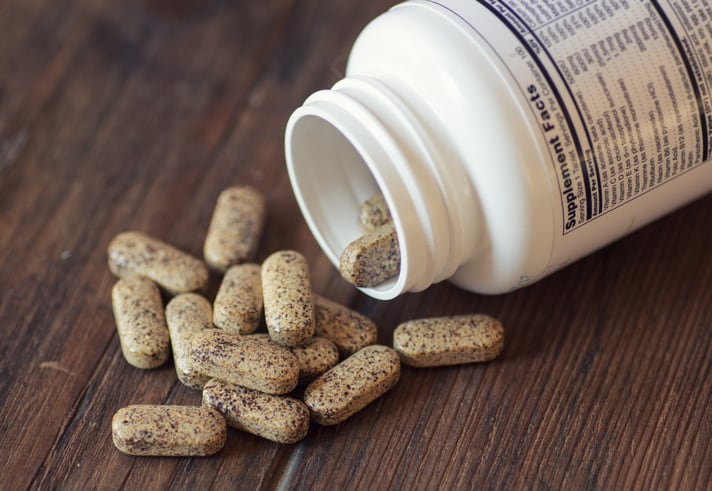In addition, a greater anti-inflammatory activity in lipopolysaccharide (LPS)-induced macrophages was observed in the ABE-SeNPs, when compared with SeNPs. The researchers emphasise that their findings suggest that the ABE exhibits a cryoprotect and/or lyoprotectant role of ABE.
“The present study shows the potential of ABE as an effective stabilizer for nanoparticles and provides evidence for the development of ABE-SeNPs as a food supplement or novel functional ingredient for health benefits,” the Thai researchers conclude.
A crucial mineral
Se is a vital element required for the formation of selenoenzymes, which are involved in many processes within the human body, such as the antioxidant defence system, thyroid hormone formation and immune function.
Thus, Se deficiencies have been associated with a dysfunctional antioxidant system, which may accelerate aging and increase risks of conditions such as cancer, cardiovascular disease, and thyroid disease. As a result, there is a strong interest in taking associated supplements to prevent such metabolic conditions in both the deficient and the healthy.
Selenomethionine (SeMet) is the organic form most commonly used within dietary supplements, due to its higher absorption and retention rates compared to inorganic types, such as selenate and selenite. However, it is noted that a concentration limit must be observed in their production, due to potential toxic effects at high doses.
Following this, Selenium nanoparticles (SeNPs) have attracted interest for use as food supplements because of their low toxicity with better bioavailability compared with traditional selenium supplementation.
In addition, evidence has noted that plant extracts containing phenolic or flavonoid compounds are effective in SeNP production, due acting as stabilisers and reducing agents.
One such extract includes the orchid Anoectochilus burmannicus extract (ABE), which has been found to exhibit strong antioxidant and inflammatory activities. Therefore, the present study sought to investigate the potential of ABE to be used as a stabiliser and/or reducing agent of nano-selenium (SeNP) synthesis.
Selenium stabilised
The A. bumannicus orchid tissues were obtained from Queen Sirikit Botanic Garden in Chiang Mai, Thailand, and were washed and oven dried at 60 °C for 24 hours. The powder was soaked in 80% ethanol and freeze-dried to obtain the ethanolic extract powder (ABE).
ABE-SeNPs were then synthesised by an ascorbic-redox system utilising two methods to investigate the potential of ABE as a reductant in the reaction.
Whilst it was observed that the SeNPs synthesised without ABE exhibited higher antioxidant activity, ABE-SeNPs (4 µM Se) demonstrated a greater anti-inflammatory effect in LPS-induced macrophages than the SeNPs.
It was noted that ABE exhibited cryoprotectant properties to the SeNPs, with significantly improved stability in terms of antioxidant and anti-inflammatory activities following the freeze-drying process, when compared with freshly prepared particles.
In addition, the authors say ABE prevented particle aggregation and a reduction in antioxidant capacity following additional long-term storage for 90 days.
Explained
The report attributes the observed stability effects of the nanoparticle to the bioactive and organic compounds present in the ABE extract, such as polysaccharides, lactone glycosides, flavonoids, and organic acid.
“A previous study reported that polysaccharide improves the stabilization of Se nanoparticles synthesized in a redox system using ascorbic acid. The presence of chitosan stabilized the nanoparticle for up to 60 days without the aggregated particle compared to bare SeNPs,” the researchers explain, highlighting the strength of their findings.
They add: “In addition, Xiguang et al. found that green tea nanoaggregates could be used as a templet to stabilize SeNPs due to polyphenols in green tea infusions spontaneously assembling into nanoaggregates via the interaction with proteins, carbohydrates, and other components. This evidence supports the possibility that polysaccharides together with other compounds contained in the crude extract of ABE stabilize the nanoparticle.”
Whilst the study provides strong evidence that may benefit the future of selenium supplementation production, future study is required to investigate the efficacy and safety within animals and human models.
Source: Nutrients
https://doi.org/10.3390/nu15041018
“Stabilization of Antioxidant and Anti-Inflammatory Activities of Nano-Selenium Using Anoectochilus burmannicus Extract as a Potential Novel Functional Ingredient”
by Pensiri Buacheen, Angkana Chaipuang, Jirarat Karinchai, Onanong Nuchuchua, Arisa Imsumran, Ariyaphong Wongnoppavich, Nuttaporn Pimpha, and Pornsiri Pitchakarn

